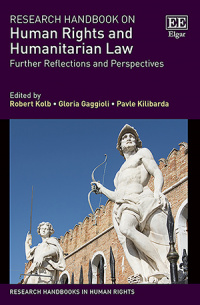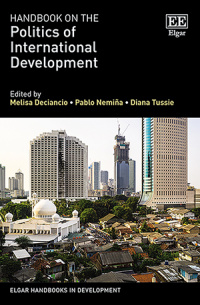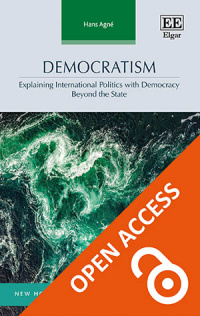平装
Regulating the Use of Force in International Law
Stability and Change
9781803928456 爱德华·埃尔加出版社
本书对规则在国际法中使用武力的规则的性质,内容和范围进行了全面,详细的分析,因为它们包含在联合国宪章,习惯国际法和国际法学中。它研究了这些规则,因为它们适用于发展和挑战的情况,例如非国家参与者的出现,安全风险,新技术和道德考虑。
More Information
备受好评
Contents
More Information
本书对规则在国际法中使用武力的规则的性质,内容和范围进行了全面,详细的分析,因为它们包含在联合国宪章,习惯国际法和国际法学中。
这本书的范围很大,涵盖了对武力威胁或使用的禁令;在自卫中使用武力;将武力用作联合国集体安全系统的一部分;区域组织使用武力;在维持和平行动中使用武力;将武力用于人道主义目的;邀请使用武力;武装报复;使用和反对非国家参与者的武力;以及在网络空间中使用力。 The book takes an insightful look at the rules regulating the use of force as they are called upon to apply to changing and challenging circumstances such as the emergence of non-State actors, security risks, new technologies and moral considerations. Its arguments balance the interests of stability and change in order to enhance international law's regulatory potential regarding the use of force.
这本书是国际法学生和学者,武力和集体安全的使用以及参与这些法律框架解释和应用的从业者的重要资源。
这本书的范围很大,涵盖了对武力威胁或使用的禁令;在自卫中使用武力;将武力用作联合国集体安全系统的一部分;区域组织使用武力;在维持和平行动中使用武力;将武力用于人道主义目的;邀请使用武力;武装报复;使用和反对非国家参与者的武力;以及在网络空间中使用力。 The book takes an insightful look at the rules regulating the use of force as they are called upon to apply to changing and challenging circumstances such as the emergence of non-State actors, security risks, new technologies and moral considerations. Its arguments balance the interests of stability and change in order to enhance international law's regulatory potential regarding the use of force.
这本书是国际法学生和学者,武力和集体安全的使用以及参与这些法律框架解释和应用的从业者的重要资源。
备受好评
‘布坎教授和达萨古里亚斯(Tsagourias)对国际法律制度如何调节部队进行了非凡的探索。他们从历史,当代和未来的角度熟练地考虑了这个主题。学生,学者和从业人员都将受益于这项关于联合国宪章框架如何与习惯和其他补充法律来源发展和发展的全面研究。他们在不损害其法律工作的严格性的情况下,坚定地整合政治和道德上的考虑,以为这个充满挑战的法律领域做出巨大而持久的贡献。’
- 美国西点的美国军事学院肖恩·瓦茨教授
‘A compelling review and reassessment of the jus ad bellum, which fully takes account of the dramatically changing landscape of international relations, the erosion of state sovereignty and the emergence of new technologies.’
– Professor Nigel D. White, University of Nottingham, UK
‘This is a lively, readable and concise account of the regulation of the use of force, bursting with contemporary examples. The use of force is perhaps the most contentious area of international law, its terms being loaded with presuppositions about law, politics and social relations. The authors present the material clearly for our assessment, while their present voice reminds us that there can be no finite answers to these difficult questions.’
– Professor Pål Wrange, Stockholm Centre for International Law and Justice, Stockholm University, Sweden
- 美国西点的美国军事学院肖恩·瓦茨教授
‘A compelling review and reassessment of the jus ad bellum, which fully takes account of the dramatically changing landscape of international relations, the erosion of state sovereignty and the emergence of new technologies.’
– Professor Nigel D. White, University of Nottingham, UK
‘This is a lively, readable and concise account of the regulation of the use of force, bursting with contemporary examples. The use of force is perhaps the most contentious area of international law, its terms being loaded with presuppositions about law, politics and social relations. The authors present the material clearly for our assessment, while their present voice reminds us that there can be no finite answers to these difficult questions.’
– Professor Pål Wrange, Stockholm Centre for International Law and Justice, Stockholm University, Sweden
Contents
Contents: Introduction 1. Historical development of the jus ad bellum 2. The prohibition on the threat or use of force 3. The right of individual and collective self-defence 4. Other forms of the use of force: humanitarian intervention, armed reprisals and intervention by invitation 5. Cyber attacks, use of force and self-defence 6. The United Nations collective security system and the use of force 7. Regional organisations, collective security and the use of force 8. Peacekeeping operations 9. International law on the use of force: quo vadis? Bibliography Index





